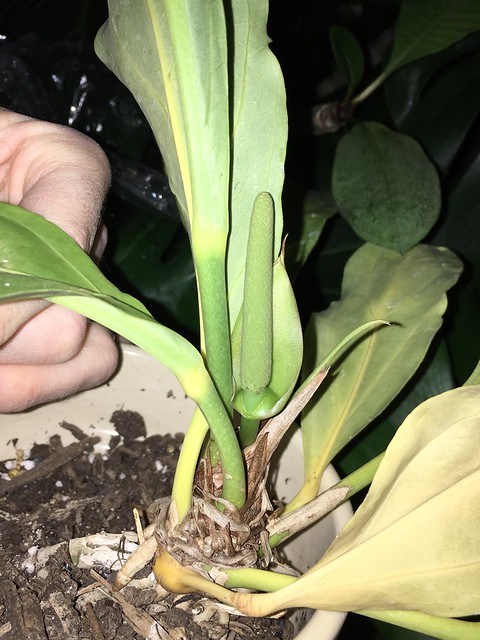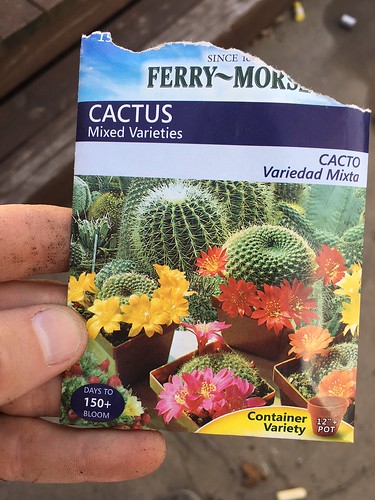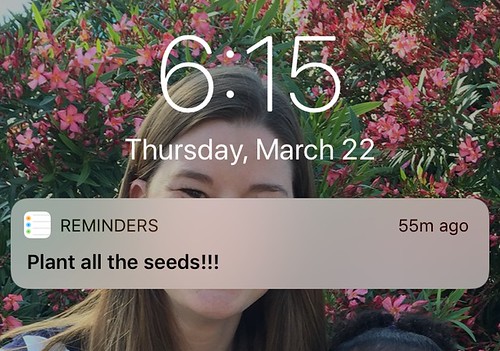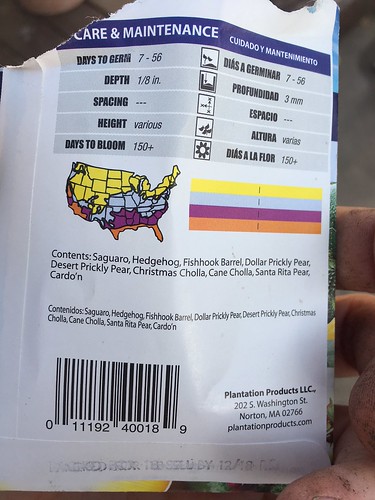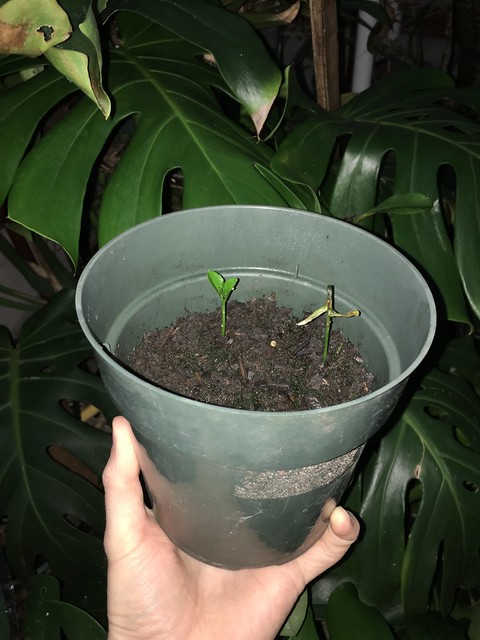It's hard to believe I never did an update post on the
Galveston garden that I planted back in 2012. My life did change quite a bit from that trip onwards, as that is when I found out I was going to be a dad. My blog posts trailed off a lot after that... Well, it's been over 5 years now, so it seems like a great time to check in on my semi-tropical garden. Most of these update photos were taken in October, 5 years after the original planting of the garden.
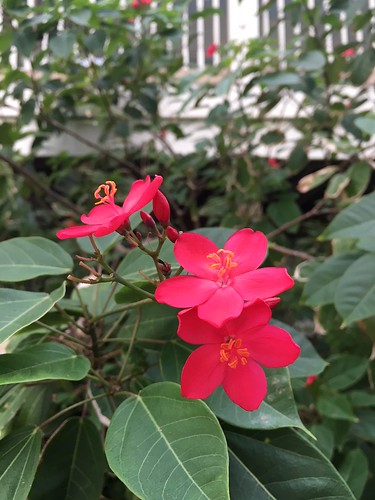 |
| Jatropha |
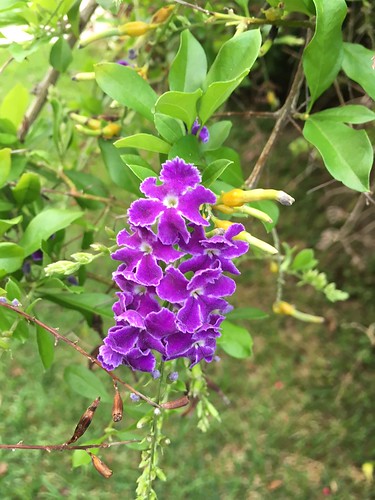 |
| Duranta |
As with any garden I've ever planted, some plants thrive much more than others, and some succumb to one or more factors. More often than not, those factors in my home gardens are heat and drought, occasionally to a hard winter. I can safely say none of those factors have taken a toll on the plants in Galveston.
 |
The garden on the right side at time of planting, October 2012.
Can you even see the Justicia? It's the lanky little stem with few leaves just below the black Crape Myrtle in the image.
See the struggling Yucca?
|
It seems my biggest issue in Galveston is competition. A few aggressive growers have expanded faster than I expected and drowned out all the sunshine from their neighbors. The biggest offenders are
Bougainvillea, Red Shrimp Plant (
Justicia bandegeana),
Allamanda,
Duranta,
Plumbago, and
Jatropha.
 |
| The garden on the right side, as seen in October 2016, before trimming. |
The Black Diamond® Crape Myrtle (
Lagerstroemia indica) is still alive, but it is struggling to get enough sunlight because of the Shrimp Plant. That plant and a Yucca (far left of image above) have really surprised me with their rate of growth. The Shrimp plant was a lanky little twig when I planted it. Now it's 6 feet in diameter, and only because I whack it back on a regular basis. The Yucca was about 4 feet tall and only had 4 struggling leaves when it was planted. Now the base of the tree has enlarged, it is about 7 feet tall, and has a nice head of green leaves. It even bloomed recently!
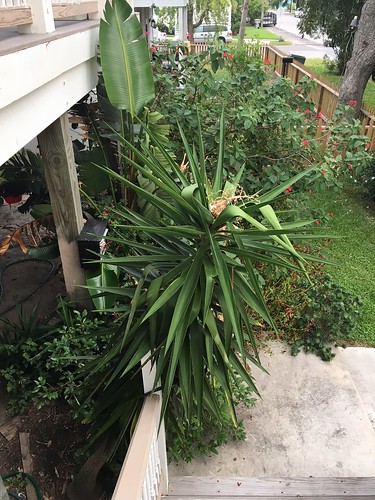 |
The Yucca has really grown in height and you can see the remains of an inflorescence in this photo.
Unfortunately I didn't get to see it in flower. |
 |
| Red Shrimp Plant (Jatropha) as seen from above. The mailbox is becoming out of reach. |
We visit Galveston a couple of times a year and on most of those trips I have spent an afternoon out in the yard, trimming. One of my priorities is always to cut back all of the growth in front of the mailbox, so that the postal worker can get to the box, which you can see is hard to access in the photo above.
 |
| More accessible mailbox after trimming. |
The trimming can be a heavy chore with the rate of growth of some of these plants. And with the nasty thorns on the Natal Plum and the
Bougainvillea, it can be a painful chore. The Natal Plums are covered in little white star-shaped flowers much of the year, which are followed by small edible fruits that my mother-in-law has used to make tiny tarts.
 |
| Natal Plum covering the sidewalk. Luckily the sidewalk is just a segment that ends at each end of the yard, so no one used it anyway. It is required by the City of Galveston on all new construction. Who knows when a sidewalk will be installed in either of the neighbor's yards... |
One of the Oleander we planted after the initial planting has shot up to the top of the stairs, which is really cool because the flowers are very fragrant and they are at nose level both on the ground and at the landing of the stairs. I still have to spend quite a while trimming the lower branches that grow horizontally.
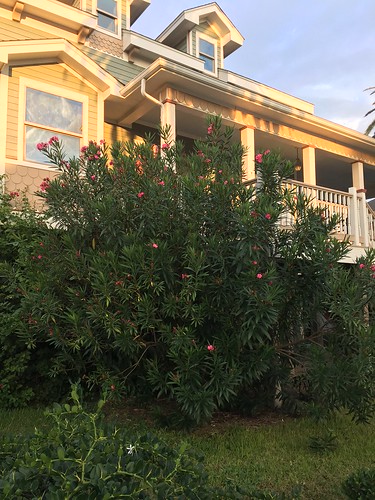 |
| Large Oleander towering up to the second story, October 2016. |
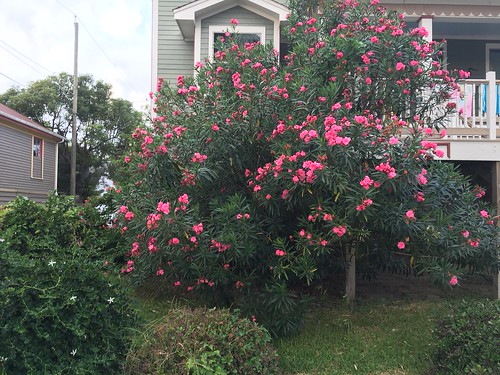 |
| Another view of the dominating Oleander before trimming. |
 |
| Some better definition, exposure of the yard and garden border, after a thorough trimming. |
We also have a few invasive vines that I have to keep pulling up. I gave up on ever ridding the garden of them, so I just try to keep them in check. Sometimes it's easiest to just find them where they are coming up from the soil and clip them there. It takes a long time to unwind them from all of the places they are climbing in the bushes.
The prize for plant that I didn't think would make it at all is a Bromeliad that my mother-in-law received as a gift and didn't want to keep growing in a pot in her home. She planted it in the garden in Galveston and I figured it would surely be a goner in a few short months. Much to my surprise, it has done well there and even flowered several times since it was planted in the ground.
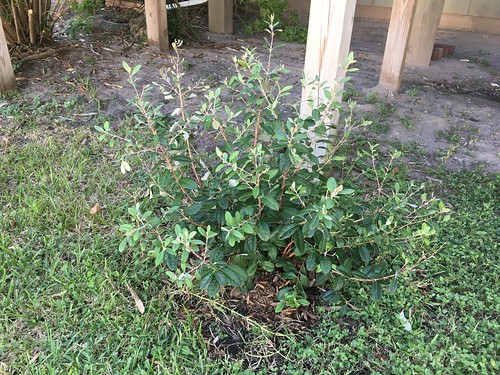 |
| Pineapple Guava |
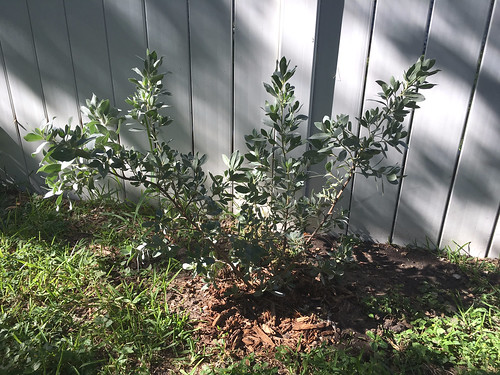 |
| Buttonwood |
Late last year we added a couple of new bushes, a Pineapple Guava and a Buttonwood. Who knows if either of these will become monsters? To be continued.
